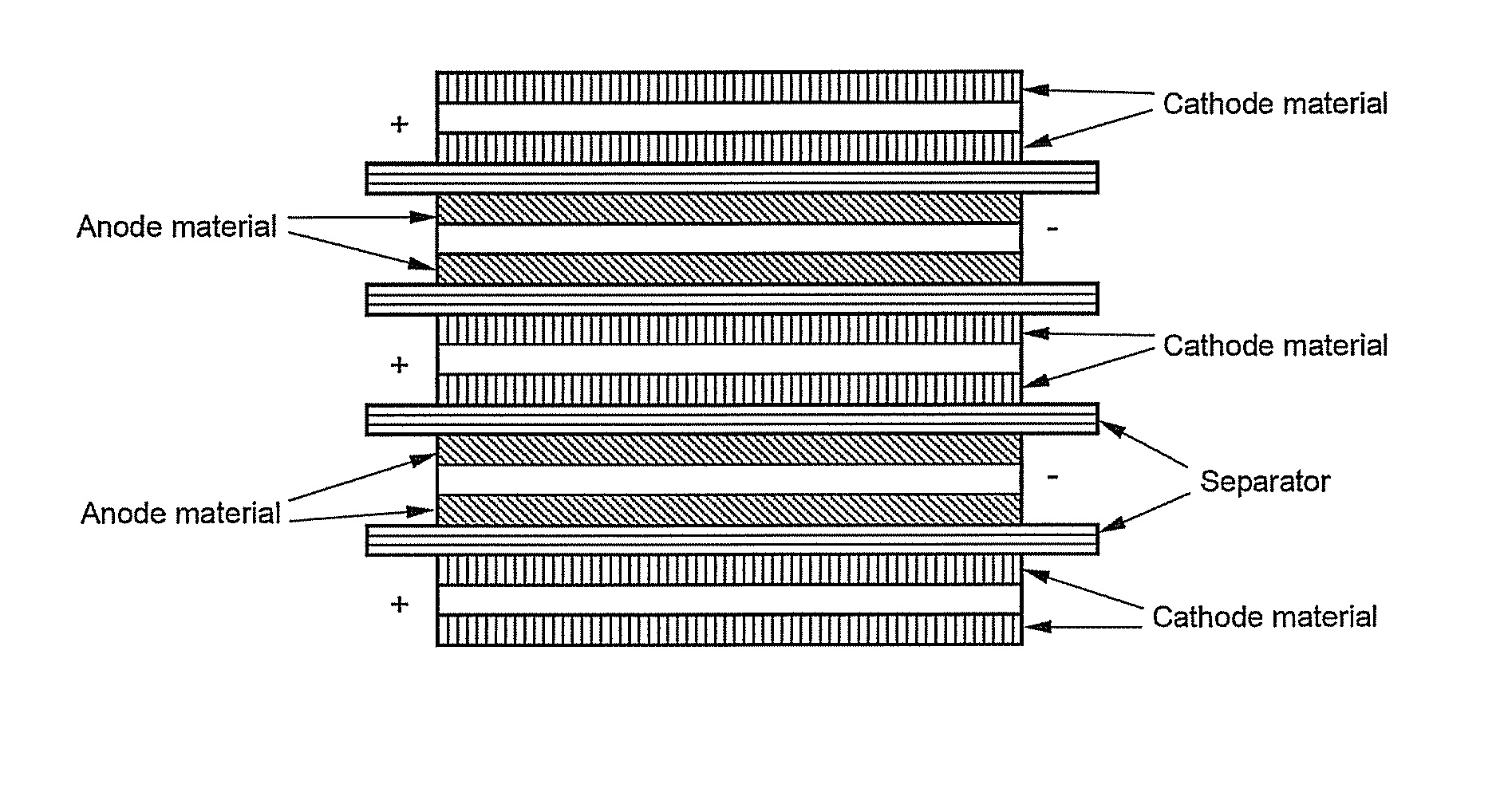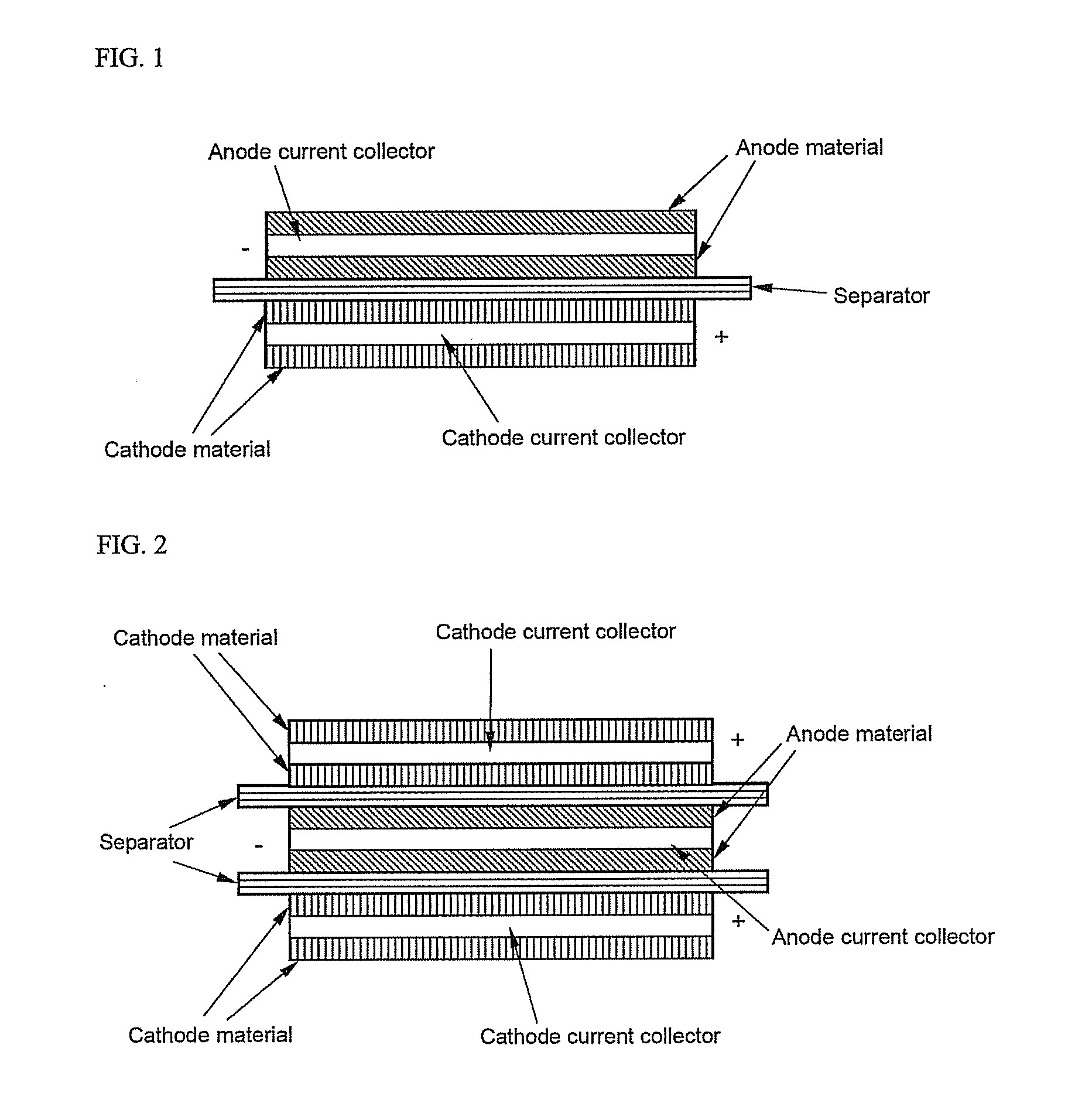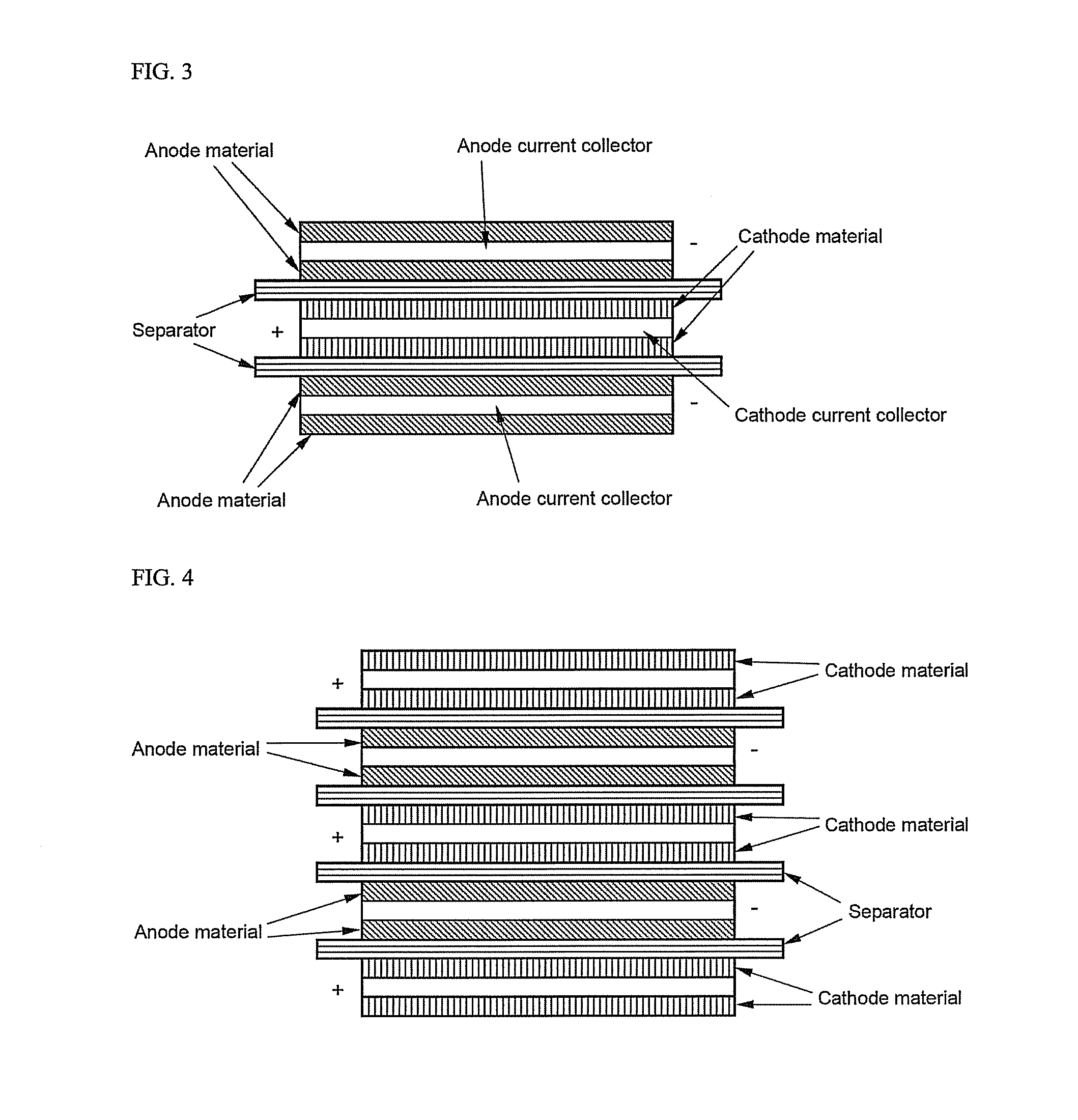Multi-layered type electrochemistry cell of improved safety
a multi-layered type, electrochemical cell technology, applied in the direction of cell components, flat cell grouping, sustainable manufacturing/processing, etc., can solve the problems of low utilizability, troublesome, complicated and troublesome stacking type electrochemical cell, etc., to maintain the structural stability of the electrochemical cell
- Summary
- Abstract
- Description
- Claims
- Application Information
AI Technical Summary
Benefits of technology
Problems solved by technology
Method used
Image
Examples
example 1
[0037]A cathode mixture slurry was prepared by adding 95 weight percent of LiCoO2 as a cathode active material, 2.5 weight percent of Super-P (a conducting agent), and 2.5 weight percent of PVdf (a coupling agent) to N-methyl-2-pyrrolidone (NMP) as a solvent. An anode mixture slurry was prepared by adding 95 weight percent of artificial graphite as an anode active material, 2.5 weight percent of Super-P (a conducting agent), and 2.5 weight percent of PVdf (a coupling agent) to NMP as a solvent. The cathode mixture slurry and the anode mixture slurry were coated on an aluminum foil and a copper foil, respectively. Subsequently, the aluminum foil and the copper foil were dried and pressed. In this way, cathodes and anodes were manufactured.
[0038]Cell Guard™ was used as separators. The cathodes, the anodes, and the separators were sequentially stacked one on another to construct bicells. The same material as the separators, i.e., Cell Guard™, was also used as a separation film. A total...
example 2
[0039]A battery was completed in the same manner as Example 1 except that the separators were thermally welded to the separation film at the lower ends of the bicells.
experimental example 1
[0041]The batteries manufactured according to the Examples and the Comparative Examples were charged to 4.2 V, and then the batteries were dropped from the height of 1 m. The dropping experiments were carried out 50 times in succession. The results of the dropping experiments are indicated in Table 1 below.
TABLE 1Number of batteriesshort-circuited during50 continuous droppingNumber of batteriesexperimentsExample 11002Example 210010Comparative Example 110085
[0042]It can be seen from Table 1 that the occurrence of short circuits was considerably reduced even after the 50 continuous dropping experiments were carried out for the batteries including electrochemical cells constructed in a structure in which a plurality of unit cells are folded by a separation film formed in the shape of a long sheet, and separators of the unit cells are secured to the separation film by thermal welding.
PUM
| Property | Measurement | Unit |
|---|---|---|
| temperature | aaaaa | aaaaa |
| temperature | aaaaa | aaaaa |
| height | aaaaa | aaaaa |
Abstract
Description
Claims
Application Information
 Login to View More
Login to View More - R&D
- Intellectual Property
- Life Sciences
- Materials
- Tech Scout
- Unparalleled Data Quality
- Higher Quality Content
- 60% Fewer Hallucinations
Browse by: Latest US Patents, China's latest patents, Technical Efficacy Thesaurus, Application Domain, Technology Topic, Popular Technical Reports.
© 2025 PatSnap. All rights reserved.Legal|Privacy policy|Modern Slavery Act Transparency Statement|Sitemap|About US| Contact US: help@patsnap.com



